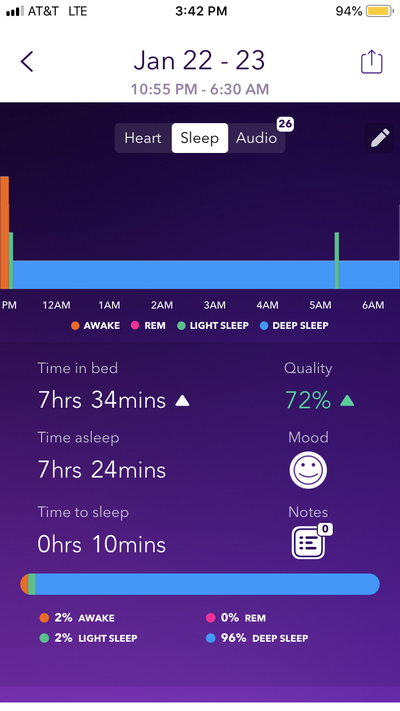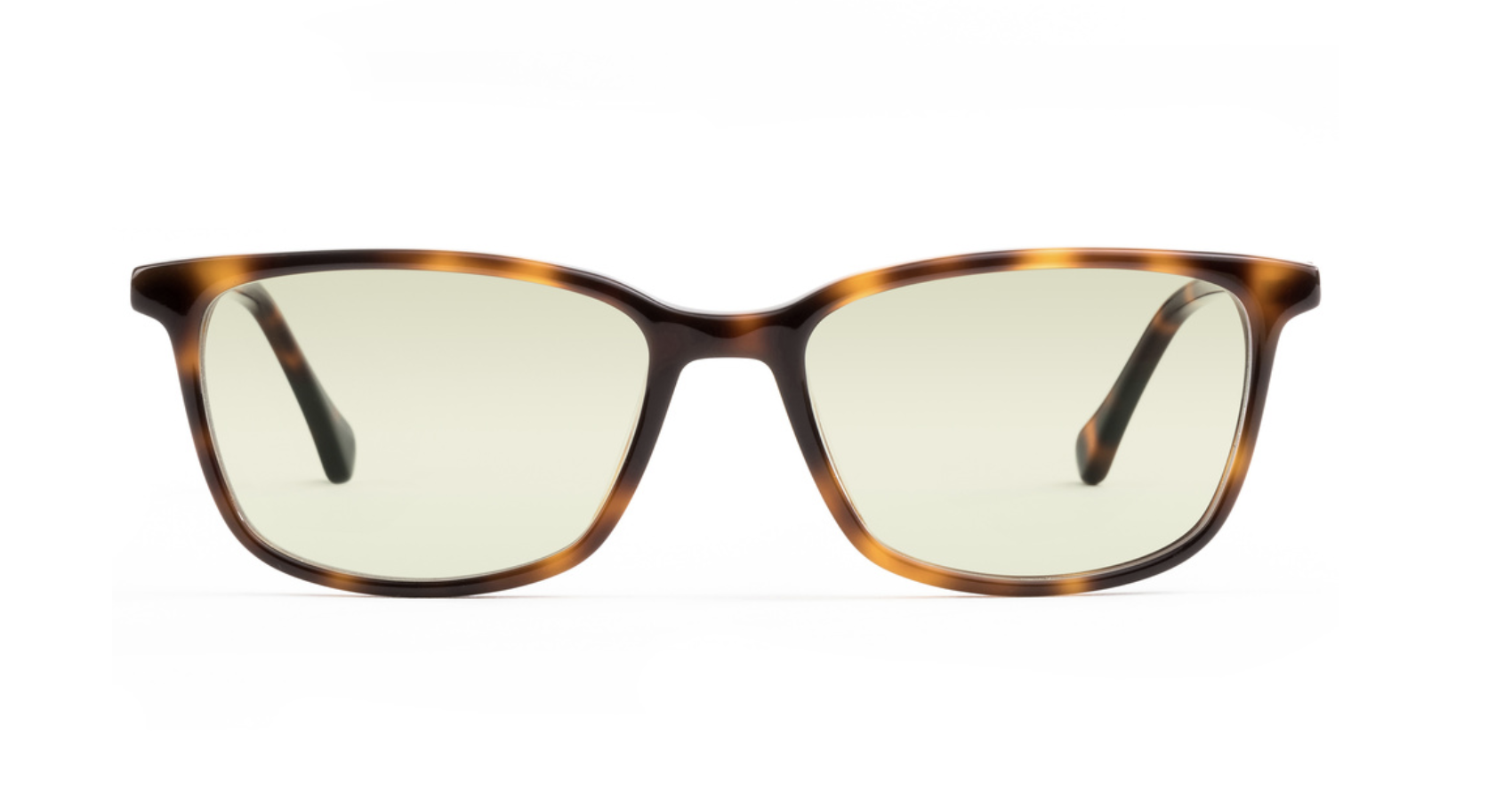Do Sleep Glasses Actually Work?
An investigation.
I’m guilty: Every night before bed, I check Instagram one last time and read The New York Times' nightly summaries, so I'm in the loop about worldly topics other than the "top ten fashion trends for 2019." On average, I log about three hours of screen time with my phone daily (ironically, my iPhone itself tells me this) and that's not including the 10 hours I spend staring at my computer in the office. The inevitable result: minor headaches, eye strain, and, occasionally, sleepless nights.
My solution to digital eye strain has been to take out my contacts as soon as I get home and switch to my glasses, which has helped immensely, and to not look at my phone 30 minutes before bed. The latter was harder to put into practice. I was fine continuing on like this, looking at email, possibly hurting my eyes in the process. Such is the life of a millennial. Then, I heard about sleep glasses.
The premise: Wear the specs while going about your nightly digital activities, and you'll get a better night's sleep. The lenses apparently block out blue light—which is known to suppress your melatonin levels—thus causing sleeplessness. Less blue light equals more and better sleep.
I was intrigued.
While I don't suffer from major sleep issues, who couldn’t benefit from improved Zzzs? I reasoned it wasn’t worth a shot. I would test out the glasses and document the results, if any. So began the two-week process.
The Glasses
I chose a pair from eyewear brand Felix Gray, some rectangular frames called Faraday in the color sazerac for $95. (It was difficult deciding what frame suited my face, but I based it off my eyeglasses from Warby Parker.) I chose a non-prescription pair, though the company does offer ones with prescriptions for $145, and hoped my selection wouldn't look ugly on me.
Though I was excited to test the glasses out, one question plagued me: What's the difference between these lens that block blue light and the night shift mode on our iPhones? Night shift, as you may recall, changes the color of your screen to warmer hues once it gets dark in order to promote better sleep. According to Felix Gray co-founder David Roger: "What the iPhone is doing is changing the temperature of your screen so it’s more comfortable since the contrast between a dark room and the bright light from your screen is less noticeable. But white light is the inclusion of red, green, and blue light. This means that as long as there's white (or off white), your screen is producing blue light. Only a fully red screen can counteract blue light production."
Get exclusive access to fashion and beauty trends, hot-off-the-press celebrity news, and more.
So in a nutshell, night shift doesn't really help you get a better night's rest; it’s just nicer for your eyes. A study by the Light Research Center backs this up. Still, out of habit, I continued to turn on night shift even when I was wearing my sleep glasses. Double the eye protection, right?
My Sleep Patterns
While I waited for the glasses to ship, I tracked my sleep patterns. For a week, I used the Pillow app (recommended by numerous articles) because it was free and easy to use. The app monitors your slumber through out the night and, in the morning, gives you a break down of your sleep quality.
Unfortunately, I didn’t realize you can’t save stats in the free version. (Can you tell I'm not great with technology?) But, I can report that I averaged about seven hours of sleep per night and did not have trouble dozing off despite being on my phone or computer at night. Learning from my mistake, I made sure to screenshot a sample of the statistics from the week I wore my Faradays.

As you can see, from January 28 to the 29, it took me about 10 minutes to fall asleep and I slept a good seven hours and 30 minutes. This was on par with my previous week's stats (you know, the week I wasn’t wearing the glasses).
The Results
Although I’d like to say I slept like a baby after trying on the glasses, this wasn't true for me. I didn't see any noticeable changes in my sleep quality with the glasses on versus off. I snoozed solidly both weeks and consistently conked out within that 10-minute mark.
The one major change I did experience was that wearing the glasses drastically reduced my headaches and dizziness. My test week turned out to be a super busy one at work, of course, so I was logging extra hours at night to finish up a story or answer emails. Between the hours of 7 p.m. and 11 p.m., I wore my sleep glasses. I was able to stay on my laptop for a lot longer without feeling tired or overwhelmed that I had been staring at a screen for 14 hours. The glasses made me feel calm, and it was soothing to see things through a yellow tint. (It took me about a day to adjust to the tinted view.)
My Final Verdict
In the end, am I glad I own a pair of sleep glasses? Yes. But are they a miracle cure? No. Because there are so many different factors that affect a person's sleep pattern, from work stress to the environment (is wearing sleep glasses and ear plugs too much?), it's unfair to say a pair of glasses will fix everything. But if you're looking for a possible solution and have exhausted a lot of other options, perhaps it's time to invest in a pair of sleep glasses? I'm wearing mine right now, as I write this last sentence at 10:45pm. How do my eyes feel? Great.
For more stories like this, including celebrity news, beauty and fashion advice, savvy political commentary, and fascinating features, sign up for the Marie Claire newsletter.
RELATED STORY

Marina Liao is the former fashion news editor at Marie Claire, where she covered celebrity style (from Meghan Markle to Katie Holmes), fashion trends, and shopping advice, plus conducted original interviews with industry insiders. She's now the Senior Commerce Editor at House Beautiful, where she owns coverage on deals and sales across home decor and accessories, in-depth product reviews on furniture and appliances, as well as news around new product launches since 2023. With help from leading designers and tastemakers, Marina spotlights quality products while tracking current design trends, a skill she’s mastered over six years in fashion media. Marina holds a bachelor’s degree in journalism from Stony Brook University, beginning her career in narrative-driven commerce coverage as an editorial assistant at PopSugar.
